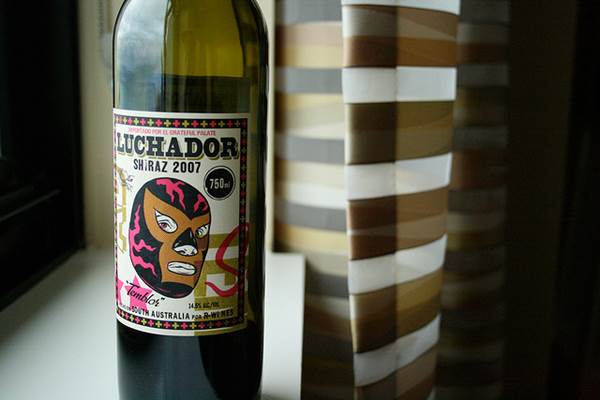 Luchador Shiraz, 2007, South Australia, R Wines – Ben says, “This ever so wonderful bottle of wine is a new favorite of mine. Fruit-forward but not jammy with hints of vanilla and smoke and the earthy flavors that I love in a finish. Balanced and delicious.” Image Courtesy: Ben Husmann
Luchador Shiraz, 2007, South Australia, R Wines – Ben says, “This ever so wonderful bottle of wine is a new favorite of mine. Fruit-forward but not jammy with hints of vanilla and smoke and the earthy flavors that I love in a finish. Balanced and delicious.” Image Courtesy: Ben Husmann
With more than 60 designated wine regions across the country and 103 defined geographic wine growing districts, Australia has emerged as the fourth largest producer of wine in the world. Wines from Australia have earned a worldwide reputation by combining tradition with fresh ideas and technology.
Australians, as a nation, are strongly committed to the holistic and healthy properties of the earth. Due to such organic movement gaining ground in the country, biodynamic and organic vineyards are becoming very popular.
Australian Wine-Makers
Australian wine-makers, according to wine critic Matt Kramer, “are an important resource in the globalization of wine and the most powerful influence in wine today come from Australia”. It is also due to the fact that Australian wine-makers travel the globe, during their off-season at home, relocating to the northern hemisphere as highly skilled seasonal workers.
Wine Regions of Australia
Australian wine, produced from grapes grown in the warm climate of Murray-Darling Basin zones of Lower Murray, North Western Victoria and Big Rivers, constitutes the largest volume of wine in the country. However, the premium higher value wines are made in smaller regions with cooler climates.
Hunter Valley near Sydney, the Barossa Valley in South Australia near Adelaide and Yarra Valley in Victoria near Melbourne are among the regions making the most popular wines. Over recent years, the Tasmanian wine industry has also started producing high quality wines. The Tamar Valley, in particular, has made a reputation for itself by producing quality Chardonnay and Pinot Noir, the flavours well suited to the cool Tasmanian climate.
Grapes and Wineries
Among the major grape varieties in Australia are Cabernet Sauvignon, Chardonnay, Reisling, Sauvignon Blanc, Sermillion and Shiraz (also called Syrah). There are many big wineries in Australia and the most well-known among them are the Hardy Wine Company, Lindemans, Penfolds, Rosemount and Wyndham Estates.
However, in order to find the exclusively organic and biodynamic wines, one needs to look to Captains Creek, Kalleske Wines and Robinvale.
Here is a look at these last three:
Captains Creek Organic Wines
A family-owned and operated vineyard, Captains Creek in Daylesford, Victoria produces hand-crafted premium quality certified organic wines from the Burgundian grape varieties Chardonnay and Pinot Noir. The usual preservative for wines called sulfites is kept to a minimum and no chemical additives are used throughout their wine-making.
Kalleske Wines
The Kalleske family of South Australia’s celebrated Barossa Valley has been growing and farming grapes since the 1800s. All of their wines are estate grown, and minimalistic winemaking techniques are used in order to fully capture the essence of their vineyards. This allows genuine handmade estate wines to be produced and, no wonder, they have received the Australian Certified Organic seal for all their wines.
Robinvale
For many years, when people talked about organic wine, the first and perhaps the only brand that came up was Robinvale Wines. It has been in production since the 1970s and though there are many other organic wine producers now in Australia, it’s refreshing to see Robinvale continuing to be innovative and keep coming out with interesting new varieties.
The Certified Demeter Biodynamic wine produced by them is made with environmentally friendly and ecologically safe biological methods. This process nurtures the life of the soil avoiding the use of artificial or synthetic chemicals, fertilizers, fungicides, herbicides, pesticides or additives.
Leave a Comment